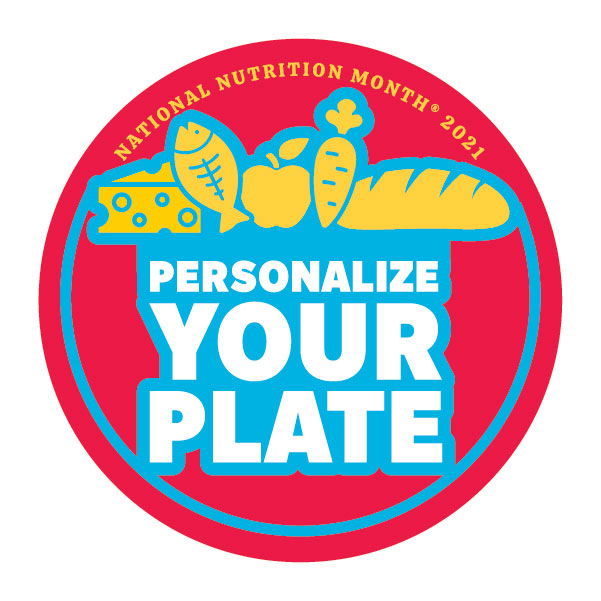March is a special month in the nutrition world. It’s National Nutrition Month! This annual campaign, created by the Academy of Nutrition and Dietetics, brings us a new theme every year in March that allows us to learn about making informed food choices and developing healthful eating and physical activity habits. This year, the theme is Personalize Your Plate.
Personalizing your plate is all about realizing there is no one-size-fits-all approach to nutrition and health. We are all unique with different bodies, goals, backgrounds and tastes. Check out these tips on building a better meal below:
Step 1: Schedule your meals and snacks. Identify the times that you will be eating breakfast, lunch and dinner. After that, add in your snacks. If you need assistance with planning your meals and snacks around your training schedule, take advantage of one of our services such as the nutrition plan!
Step 2: Pick your protein. Protein is an important macronutrient, especially for athletes and those seeking to build muscle mass. Proteins are the building blocks of your body. This nutrient can also aid in weight management! Pick a different protein source at each fueling opportunity. Try lean proteins such as chicken, turkey, fish, lean beef, eggs and dairy products, and remember those plant-based protein sources like beans, lentils and legumes!
Step 3: Choose your carbohydrates. This macronutrient will be utilized in meals and snacks surrounding your training sessions. Carbohydrates provide our bodies with the fuel we need to power us through those workouts and help jump start the recovery process. Select a high-quality carbohydrate source at these times such as whole grain bread, cereal, pasta, brown rice, quinoa, granola and oatmeal.
Step 4: Add your healthy fat. Healthy fats are an essential part of your everyday diet! They provide your body and brain with protection from wear and tear. Try fatty fish like salmon, tuna or sardines, or try other sources such as olive oil, avocado, nuts and seeds. An added bonus of fatty fish (salmon) is the omega 3 fatty acids it contains!
Step 5: Select your fruits and vegetables. Fruits and vegetables are the support staff for many different functions in your body. Aim for a variety of colors throughout the week, as each color provides different nutrients.
Here is a blueprint of a Mediterranean Grain Bowl recipe that can get you started:
1. Choose your base
- Greens: arugula, spinach, romaine, kale
- Grains: white rice, brown rice, lentils, quinoa, Pita rounds
2. Pick your protein
- Animal proteins: meatballs, chicken, beef, lamb, fish
- Plant proteins: Falafel, roasted veggies with beans, lentils, tempeh, tofu
3. Add some toppings
- Pickled onions, cabbage slaw, diced cucumbers, crumbled feta cheese, tomato + onion salad, kalamata olives, tomato + cucumber salad, diced bell peppers
4. Finish it off with dips/spreads
- Tzatziki
- Hummus
- Harissa
- Guacamole
Leslie MacManus, MS, RD, LDN
The Core Diet















Comments